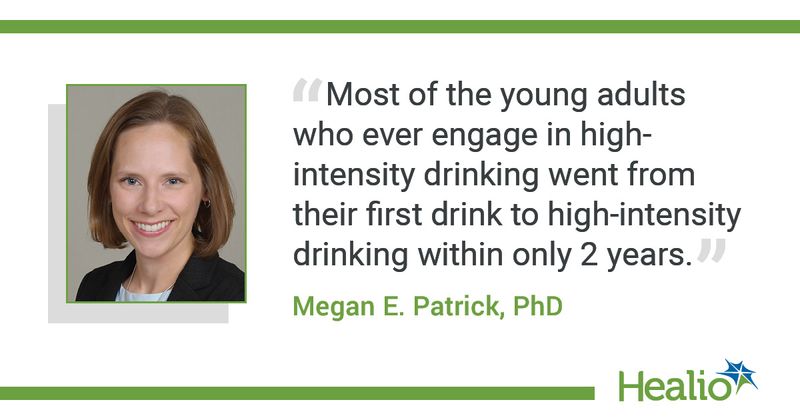Alcohol patterns in youth could predict future heavy drinking behaviors
Click Here to Manage Email Alerts
Initiating heavy drinking by 11th grade was associated with higher average weekly alcohol consumption later in life, according to a study published in JAMA Pediatrics.
Co-author Megan E. Patrick, PhD, a research professor at the University of Michigan Institute for Social Research, told Healio that “previous research has not examined when high-intensity drinking was initiated.”

“We wanted to know how quickly people move from having their first drink to engaging in heavier drinking, such as binge drinking and high-intensity drinking,” Patrick said.
Patrick and colleagues surveyed a sample of 451 adolescents in the 12th grade from the 2018 Monitoring the Future study who reported drinking alcohol in the last 30 days. At age 20, as part of the Young Adult Daily Life Study, respondents were asked the age they first drank alcohol and engaged in binge and high-intensity drinking.
As part of the surveys, a binge was defined as five or more drinks in a single period, and high-intensity drinking was defined as eight or more drinks for women and 10 or more drinks for men. Measures at age 20 included weekly alcohol consumption, frequency of high-intensity drinking and scores on the Alcohol Use Disorders Identification Test.
According to the collected data, on average, most of the respondents’ alcohol behaviors — including first drink, first binge behavior and first high-intensity drinking period — began at high school age.
The mean time of escalation from a first drink to first period of high-intensity drinking was reported as 1.9 years (95% CI, 1.8-2.1), and there was an average of 0.7 years (95% CI, 0.6-0.8) between first binge and first high-intensity drinking period. Initiation of heavier drinking behaviors by grade 11 was associated with a higher average weekly alcohol consumption (adjusted incident rate ratio [IRR], 1.40; 95% CI, 1.10-1.79) and frequency of high-intensity drinking (aIRR, 2.01; 95% CI, 1.25-3.22).
Patrick said the data demonstrated warning signs that someone might be at risk for “very heavy drinking” in later years, and that such behaviors in teenagers could facilitate screenings.
“Most of the young adults who ever engage in high-intensity drinking went from their first drink to high-intensity drinking within only 2 years,” Patrick said. “Observing these patterns of escalation, how much adolescents are drinking and how quickly their level of alcohol use is changing we hope can be used to intervene when necessary.”
